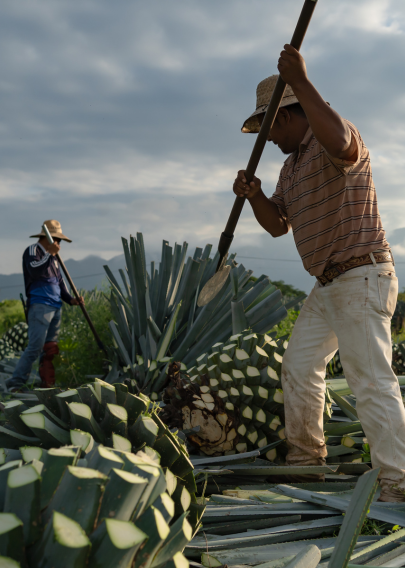Sustainability increasingly relies on collaboration between brands and their supply chain. Research has found that 91% of US consumers now consider a product’s supply chain when making a purchase. Lacking full oversight on the entire value chain leaves brands vulnerable when supplier practices go awry. We asked our brands about the challenges they have faced building relationships in their supply chain and how they overcame them.
“At Santicler, we’ve built a localized supply chain with the intention of minimizing our GHG emissions by eliminating excessive transport. We source all our materials and yarns in Euorpe and manufacutre in Romania. The most important aspect of setting up a collaborative supply chain was to forge in-person relationships with our material suppliers and manufacturers. I personally visit all the factories we use at least twice a year, and I make sure to meet our suppliers at least once a year. This approach ensures transparency and mutual trust among all the parties involved.”
– Santicler
“At Iles Formula, we have a Code of Conduct specifically in relation to our Sustainability goals which we require our suppliers and manufacturers to abide by. In our experience, we’ve been fortunate to work with partners who are able to support our mission. Reaching individual sustainability goals within certain areas of our supply chain is fortunately relatively straightforward nowadays. The challenge, however, lies in trying to coordinate these goals in collaboration with other departments within the supply chain system. For example, from a packaging perspective, glass can outwardly be considered a more sustainable alternative to plastic. However, the weight of glass compared to plastic has a higher impact on the carbon footprint incurred by its transportation. Likewise, lightweight, recycled cardboard boxes are seen as a more sustainable way to package goods. However, in reality, this type of cardboard does not offer as much protection to goods in transit so the need to replace damaged goods can increase, thus ultimately increasing carbon footprint. Therefore, Sustainability requires a strong collaboration across the entire supply chain system and it’s up to us to take a holistic view on each project and make an educated and balanced decision factoring in all the information available to us.”
– Iles Formula
“We enjoy the long standing relationships we have with all of our suppliers. This tightly knitted eco-system ensures that there is a trust in our joined-up approach to ensuring that we constantly feed into the compliance funnel, and can easily pick up the phone if we need progress reports on anything that might change. The challenge always lies in the ability to properly share information and as a business that is striving to constantly evolve our targets and goals on ESG, our suppliers need to have the same level of enthusiasm for these values. The only way to overcome this is regular communications and working with privately owned businesses ensures that there is a sense of ownabilty and responsibility that is likeminded.”
– Romilly Wilde
“The relationships built across the supply chain through the years are at the core of my business. Since inception, the company has been very selective in terms of collaborating with suppliers who are respectful not merely through their credentials but at a human level too. Challenges include excessive minimum quantities which does not resonate with our low waste/production policy and quality control. Through resourceful negotiation, I am blessed to work with a responsible and reliable network who continue to support the brand as it blooms.”
– Bav Tailor
What makes a good supplier, how can brands and suppliers collaborate sustainably, how the world of sustainable sourcing is evolving and who are the innovative organisations leading by example – find out in our latest report available to download here.
< Back








